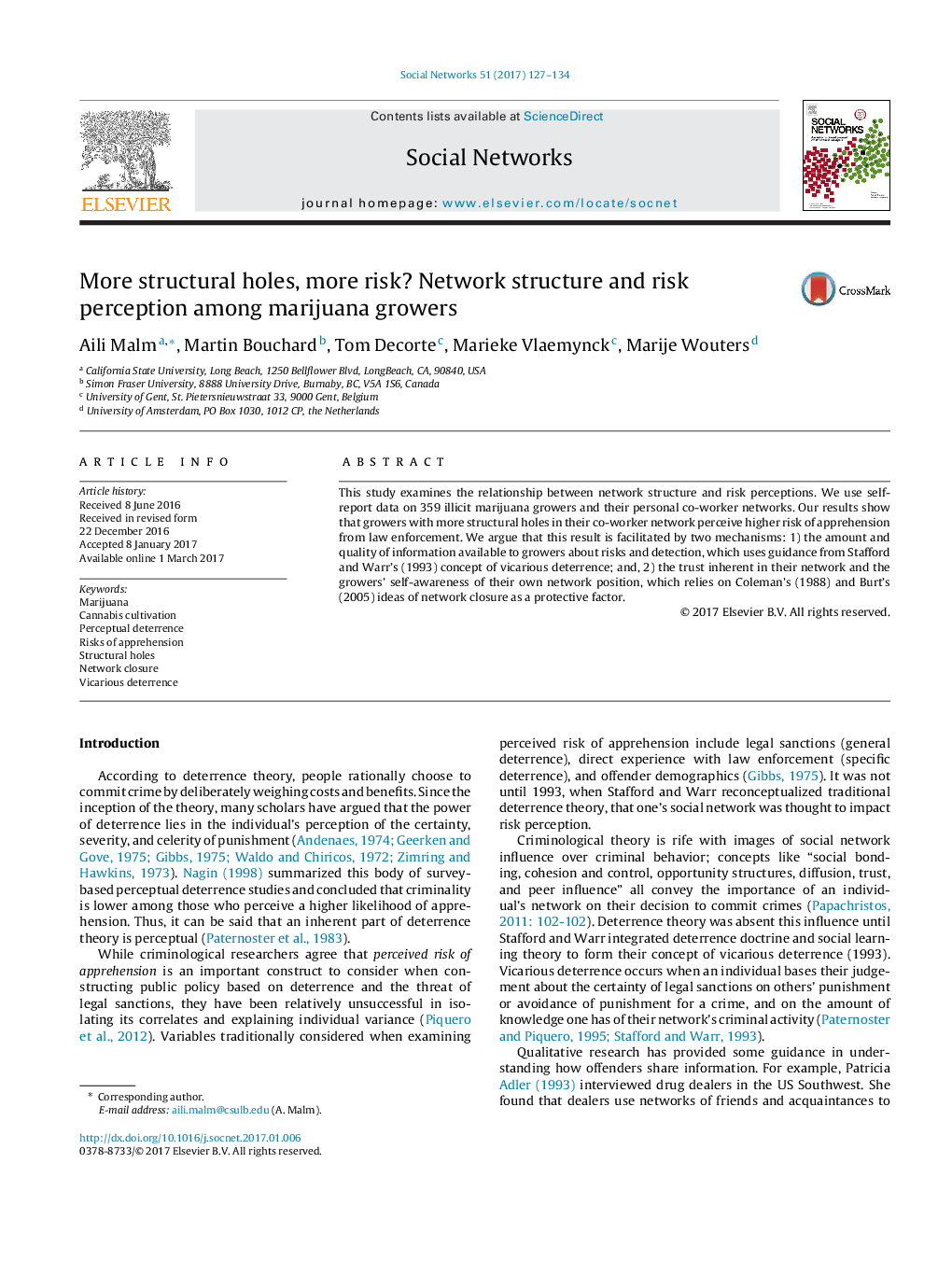| Article ID | Journal | Published Year | Pages | File Type |
|---|---|---|---|---|
| 5126762 | Social Networks | 2017 | 8 Pages |
â¢Unique self-report data on 359 illicit marijuana growers from three countries and their personal co-worker networks.â¢Growers with more structural holes in their co-worker network perceive higher risk of apprehension from law enforcement.â¢Social network variables outperform traditional direct deterrence variables in risk prediction.â¢Despite being a very different set of growers, growing in Europe in not a predictor of risk perceptions.
This study examines the relationship between network structure and risk perceptions. We use self-report data on 359 illicit marijuana growers and their personal co-worker networks. Our results show that growers with more structural holes in their co-worker network perceive higher risk of apprehension from law enforcement. We argue that this result is facilitated by two mechanisms: 1) the amount and quality of information available to growers about risks and detection, which uses guidance from Stafford and Warr's (1993) concept of vicarious deterrence; and, 2) the trust inherent in their network and the growers' self-awareness of their own network position, which relies on Coleman's (1988) and Burt's (2005) ideas of network closure as a protective factor.
